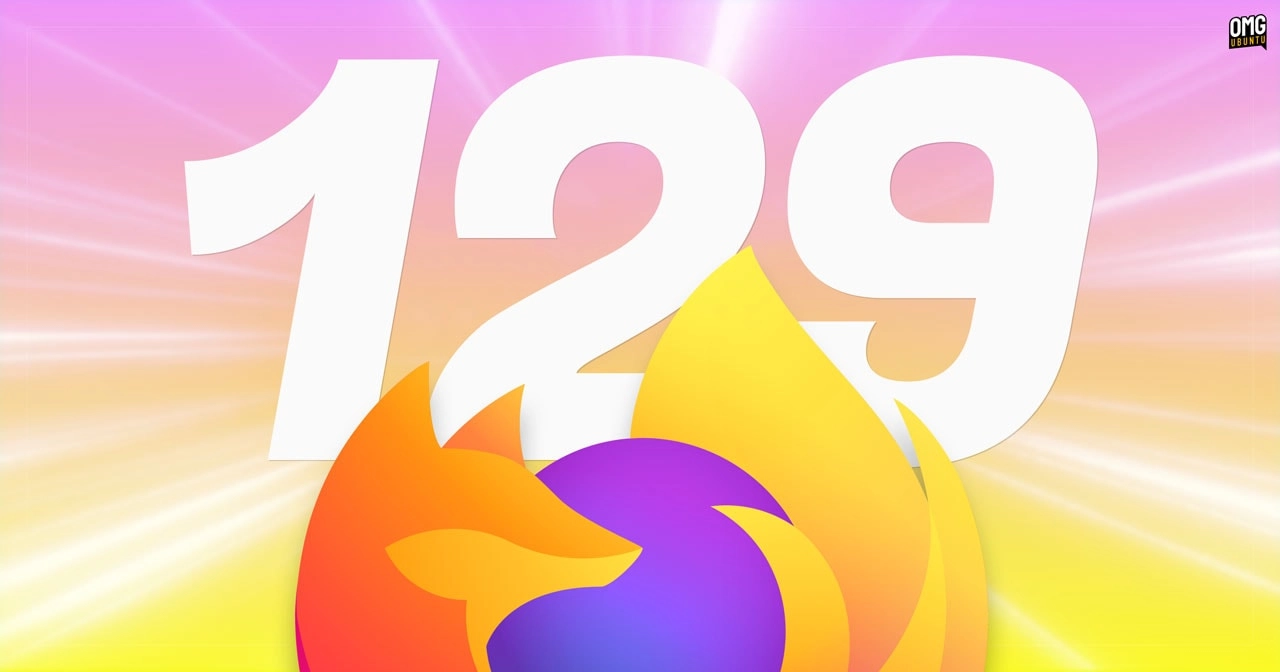Mozilla Firefox 129 is now available for download, and it comes with a couple of features that customization fans are sure to enjoy.
It’s been 4 weeks since Firefox 128 introduced a unified cookie, cache, and data clearing experience, the ability to translate portions of text on a web page, and a new privacy-respecting ‘alternative to user tracking’ API.
Does Firefox 129 improve on all of that?
Of course it does — for more details, scroll on!
“`html
Mozilla Firefox 129: What’s Changed?
I’ll kick off with the most eye-catching new feature in Firefox 129: new tab wallpapers!
I previewed this feature back in April, and showcased it again last month. For fans of customisation, this is a nice addition and brings Firefox inline with similar features offered in rival browsers.
“`
That early implementation offered just a handful of backgrounds to pick from, but the first public release rolling out with Firefox 129 offers a wider set of curated wallpapers, split across 3 categories:
- Solid Colours
- Abstract
- Photos
The selection is nice enough (I’m drawn to the solid colours personally):
Current selection of new tab backgrounds in Firefox 129
There’s no option to add a custom background of your own choosing at the moment, and no sign in nightly/developer builds that such an option is on the way soon — still, this lets you add a dash of personality to your new tab page.
Other personalization and info features are on the way (like a weather widget), making Firefox’s new tab page increasingly a place users want to look at, transforming it into a dashboard-come-springboard for web exploration. Something other than a plain white background helps.
Revamped Reader View
Reader View options in Firefox 129 and Firefox 128
Avid users of Firefox’s built-in Reader View (which strips a web page of all unnecessary clutter so you can focus on the core content, i.e., text and images) will find revamped Reader View settings UI, new options, and a separate theme panel.
The browser already offered a decent set of character and layout options, but the interface to tweak them was a little awkward/unconventional, UI-wise.
Firefox 129 overhauls the UI, giving you a better overview of what each option does, introduces sliders with pips and labels, adds a monospace font style, font weight options, separate character and word spacing settings, and more.
Reader View themes get their own dedicated section, with new Contrast and Grey options. If you want to roll your own style, you can; set your own text, background, and link colors for Firefox Reader View from the new Theme > Custom tab.
Beyond that, Firefox 129 makes HTTPS the default protocol in the address bar on non-local sites (something I already thought it did, if I’m honest). The browser will fall back to HTTP if an address can’t be loaded over HTTPS.
A few cherry-picked Linux-specific changes:
- PipeWire camera support for ARGB/ABGR formats
- Wacom Intuos 3 6×8 now correctly detected as pen, not mouse
- Ability to use mouse and stylus pen input devices simultaneously
- Fix for GPU issue causing crash when viewing Google Maps on Arch Linux
- Firefox Flatpak now opens directories using XDG Portals by default
For more details on the makeup of this release hit up the official release notes, and for developer-specific changes check out the developer release notes for Firefox 129.
In all, another welcome update to the world’s most-loved open-source web browser (someone hand Chromium a tissue, I’m out…).
Getting Mozilla Firefox 129
Mozilla Firefox is free, open-source software, available for Windows, macOS, and Linux (with mobile versions available on Android and iOS).
This update will roll out to Ubuntu users (of the snap) in the next day or so, automatically, in the background – so keep an eye out for that.
If you’re using the Mozilla Team PPA, the official Mozilla APT repo, or the official Firefox Flatpak from Flathub, you’ll get this update shortly too.
You can, as always, download Firefox from the Mozilla website, if you don’t already have it. The website offers a binary Linux build: download, extract, enter the folder, and double-click on the ‘firefox’ executable to launch it.
